Just when you are daydreaming of leaving the hustle and bustle of everyday life behind and getting away to somewhere warm, extraordinary and relaxing, we give you 10 times the BEACH inspiration. These are not standard beaches. No. These are truly magical getaways where your ultimate rest is a hundred percent guaranteed.
Benagil Beach, Portugal
Located in Portugal’s Atlantic coast, near the world-famous Algarve Resort, the awe-inspiring Benagil Beach is a place of fantastic beauty that appeals romance seekers and photographers from around the world. In Benagil Beach you have the opportunity to rent a boat to access some isolated caves; watch the fisherman at work, sunbathe and indulge in great fun. However, the main attraction of the beach remains the iconic Benagil Cave included in the list of the ’50 Most Breathtaking Places to Visit Before you Die.’
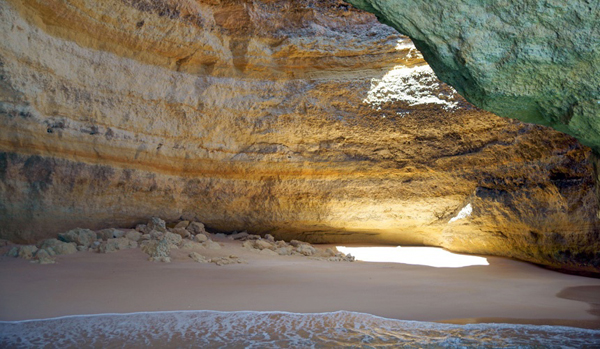
Hidden Beach, Mexico
A gaping hole in the surface of one of the picturesque Marieta Islands exposes a secret, one-of-a-kind beach, with ample shade, sun and crystal-clear turquoise water. This is the Hidden Beach, also known as ‘Playa de Amor’ or Beach of Love. The rumor has it that the hole revealing the Hidden Beach was a result of deliberate bombings (since in the early 20th century the Mexican government was used to conduct military tests). Invisible from outside and accessed only through a long (50-foot) water tunnel that links the beach to the Pacific Ocean, the Hidden Beach truly makes a great place to sit and marvel at the fact that you may be all alone on a beach. However, you can also do some kayaking and snorkeling.

Pink Sands Beach, Bahamas
The Bahamas is known for its stellar beaches, and the Pink Sands Beach really stands out from the crowd. Located in the Harbor Island, the beach fronts the Atlantic Ocean and is between 50 and 100 feet. It’s interesting to note that the sand is a composition of bits of coral, minute rocks, broken shells and calcium carbonate from tiny marine invertebrates; and the pink color comes from small microscopic shelled animals called Foraminifera, which are among the most abundant single cell organisms in the ocean. Construction of buildings is prohibited on the beach. What you will find are only palm trees and sun loungers for guests.
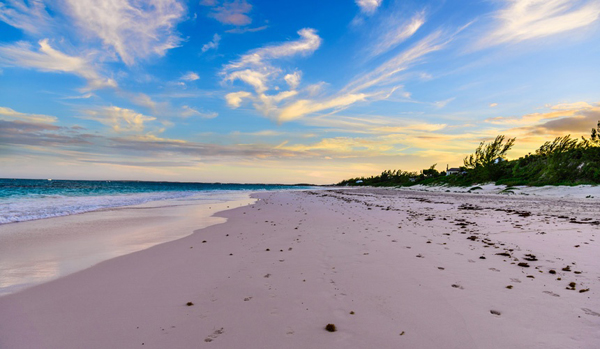
Glass Beach, California
As word of this extraordinary beach spread, more and more visitors descended onto Glass Beach. Once the spot where residents dumped their household garbage, today Glass Beach near Fort Bragg in Northern California is a place of unique natural beauty. Over decades of crashing waves the glass has been smoothed and rounded, transforming the shoreline into a colorful palette of pebble-like glass and sand. The beach is part of the MacKerricher State Park, and while it’s a good spot for locals, it does present a problem for conservationists who want to stop visitors from taking pieces home with them.
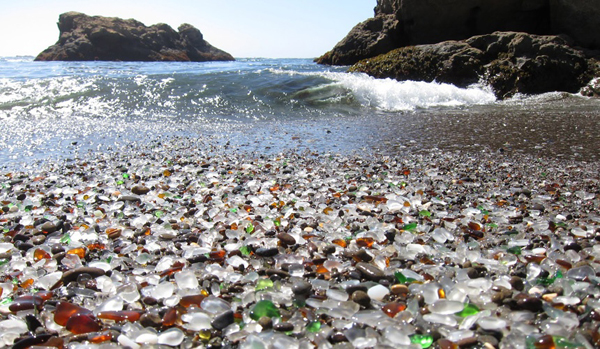
Cathedral Beach, Spain
Playa de Las Catedrales or Beach of the Cathedrals is found in Spain’s municipality of Ribadeo in the province of Lugo (Galicia). Although its true name is Holy Waters Beach (Augasantas), it is called ‘the Cathedrals’ due to its giant rock formations that remind of the flying buttresses of cathedrals.
Many consider Spain’s Cathedral Beach a magnificent example of nature’s raw power in action, a living spectacle, during which the magical rock arches, lining the beach like actual little cathedrals can be seen in all its glory at low tide, but if you stay too long, the tide will rise and swallow the cathedrals whole, until they look like sunken wonders that were never on shore. In short, this is the place, were the very concept of ‘beach’ takes on a new dimension.
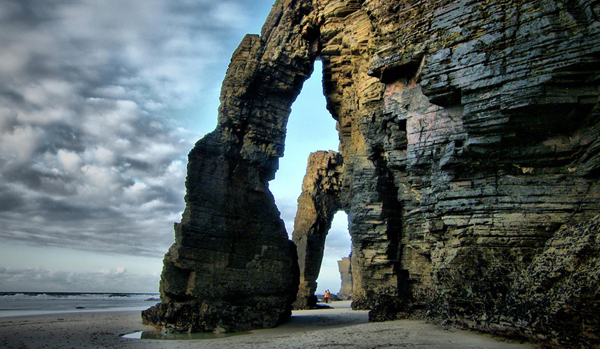
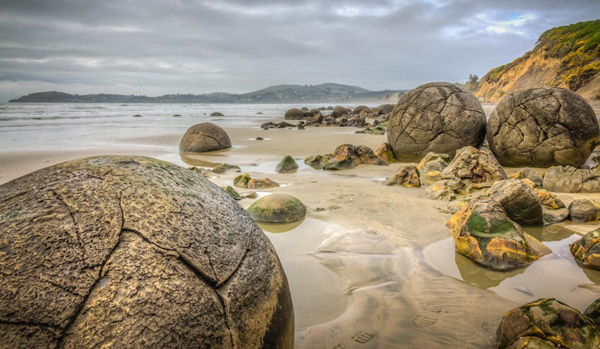
The mysterious Koekohe Beach in Otago, on the East Coast of the South Island of New Zealand, is a world-famous destination, best known for its unique Moeraki Boulders (a group of large spherical ‘stones’) that lie tumbled on the beach. According to scientists, the stones (over fifty of them) were formed in ancient sea floor sediments around 60 million years ago, with the largest boulders weighing 7 tons and rising up to 3 meters in diameter. Over the centuries people have given different names to them, including eel pots, dinosaur eggs, Hooligan’s gallstones, giant gob-stoppers, aliens’ brains, etc.
Punalu’u Black Sand Beach, Hawaii
Ideal for swimming, snorkeling, coastal hikes and picnicking, Punalu’u Black Sand Beach on the Big Island, Hawaii, is a photographer’s paradise, appealing visitors with its amazing beauty, jet black sand, made up of ground lava rocks, and its hawksbill and green sea turtles that dot the shore on a regular day. Public restrooms, showers and picnic tables are available, but there is no lifeguard. A word of warning – do not take the black sand with you as a souvenir!
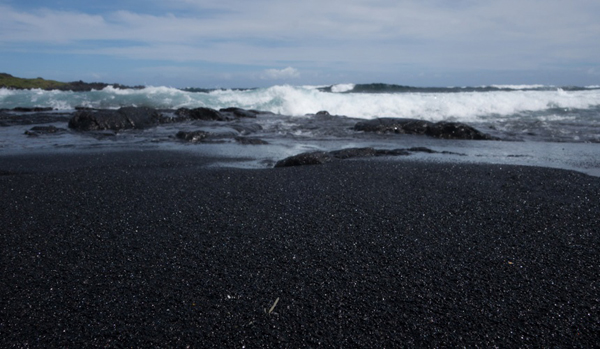
Vaadhoo Beach, Maldives
Vaadhoo is an inhabited island in the Raa Atoll, with its main attraction being the Vaadhoo Beach, also known as Vadoo, which promises a sheer bliss to those looking for something beyond special. At night, the whole beach is covered with stunning sea of ‘stars;’ the breathtaking phenomenon is caused when dinoflagellates, a species of Plankton, emit a bright blue light as their cell membranes respond to electrical signals and glow. The scene is something to be viewed to be believed.

Shell Beach, Australia
Covering a 110 km long stretch of coast along the L’Haridon Bright in Shark Bay region of Western Australia, the Shell Beach is one of the world’s only two beaches made entirely from shells. There are billions of tiny shells, piled several meters deep, all from just one species of mollusk. On the upper parts of the beach away from the water line, one can find many of the shells cemented together, in some areas leading to the formation of large, solid conglomerations. Moreover, in years gone by, the shells were hard packed, cut into blocks and used to construct a number of historical buildings, which you can see in the nearby town of Denham. It is thought that this cockle was first deposited here some 4000 years ago.
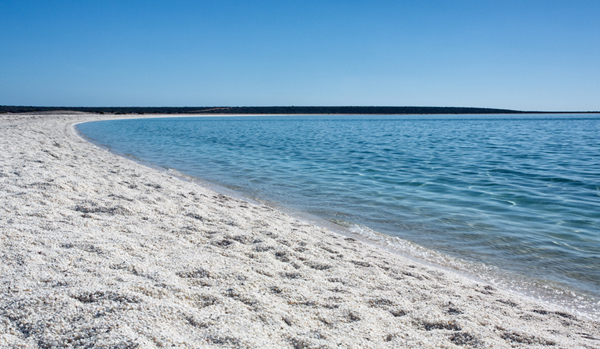
Maho Beach, St Maarten
Many will expect a typical beach to be a nice and quiet haven to relax and chill, maybe except for the Maho Beach, where tourists flood to get exactly the opposite. Found on the Dutch side of the Caribbean Island of St Marteen, the beach is well known for all the low-flying airliners, which actually fly so low that can even blow people into the water. Watching airliners pass over the beach has become such a popular activity for beach vacationers that daily arrivals and departures airline timetables are displayed on a board in most bars and restaurants of the area. Other activities you can indulge in the beach include surfing, diving or simply basking in the sun on the beach’s golden sands…
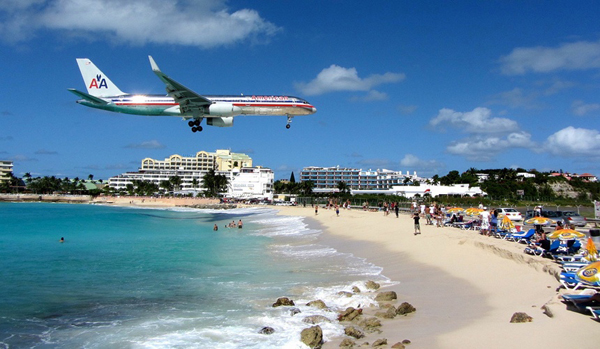



Leave a Reply